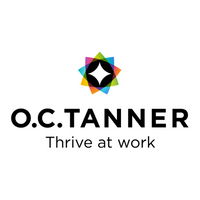How to use benefits technology to create a personalised employee experience

1. Create a joined-up experience
It’s easy to implement the latest and most ‘flashy’ apps, however if they operate in a standalone environment or have been haphazardly implemented, they will be ineffective. All technologies must be mobile-enabled and integrated to become a seamless part of people’s daily working lives. This means that logging-in and logging-out of applications using different passwords shouldn’t be needed. Any barriers to making the user experience easy will simply create frustrations and the adoption of new technologies will be stalled.
2. Focus on micro-experiences
The employee experience is complex and different for every individual. It’s a combination of a number of micro-experiences that happen every single day, such as an act of appreciation shown to someone or a great conversation with a senior leader. Of course, negative micro-experiences also shape people’s working lives, such as frustrating interactions with leaders and peers, and unnecessary challenges with workplace resources.
Benefits technologies must be implemented with micro-experiences in mind, in other words, from the bottom-up rather than the top-down. Technology must be assessed to understand how it can best enrich employees’ everyday experiences. This includes focusing on how individuals work, their daily touch points, and how they interact with their benefits, their leaders and each other, to create an experience that’s enriched by technology, not disrupted by it.
3. Tailor recognition
Any successful benefits offering must include a recognition programme that’s supported by the right recognition technology. This allows easier, more frequent and tailored appreciation from leader to employee, peer-to-peer, and employee to leader.
With the right supporting software, accomplishments can be easily broadcast company-wide, congratulatory e-cards can be sent at a click of a button and, points and rewards can be provided and redeemed with ease. Employee landmarks are never forgotten with reminders sent to leaders, and recognition is personalised with collated contributions from colleagues and leaders using technologies such as O.C. Tanner’s ‘Year Book’ solution. Being smart about the software used, will ensure every recognition moment is a personalised, truly memorable experience.
4. It’s more than technology
Rolling out benefits technology successfully isn’t just about picking the solution with the flashiest features, it’s about choosing a solution that is fit for the task at hand. After all, a poorly invested pension plan isn’t made better by an online app, and a recognition programme doesn’t change culture simply by allowing memes to be uploaded.
The employee experience can’t be improved with tech alone, it needs to form part of a company-wide strategy that is clear about the status quo and how things can be improved both offline and online.
5. Choose the right partner
When rolling-out benefits technology, it’s important to work with the very best team. Partners need to have a rounded, holistic view of what needs to be achieved and can’t just be focused on getting the tech up and running. Partners need the know-how, the specialist research, and the ability to help build both a solution and a long-term strategy that will make a difference.
An ‘off the shelf’ solution may seem an easy option, for example, but perhaps a ‘game-changing’ strategic solution that can truly put the employee first, over one that is simply ‘easy’, is the best direction for the business.
6. Putting the employee first
When it comes to any new tech implementation, it’s important to be clear how it’s going to help the individual and make their life easier. Putting the employee centre stage of any new project and ensuring their everyday employee experience is being enhanced, will always be the first step to success.
The author is Robert Ordever, managing director of O.C. Tanner Europe.
This article is provided by O.C. Tanner Europe.
Supplied by REBA Associate Member, O. C. Tanner
Giving teams the integrated tools they need when, where and how they need them.







